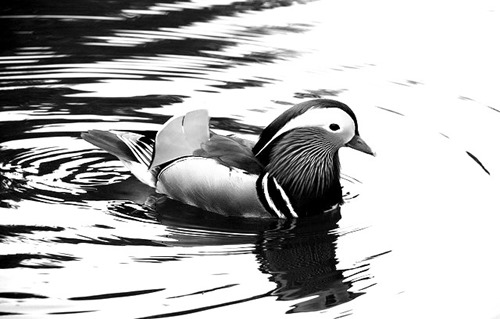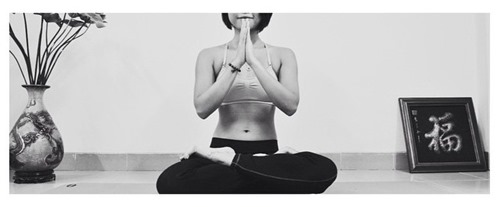The Dynamic of Stillness: How to really ‘be a Duck’
Meeting and speaking to the organizing team of an event few days ago reminds of a story about “the duck” metaphor. During my years volunteering for the youth organization AIESEC, I took part in event organizing often, sometimes up to an audience of 800 coming from more than 100 countries. We, the event organizers, always told ourselves to “be a duck”. For me, “be a duck” at that time means to remain outwardly calm, so that participants wouldn’t pick up that behind the stage hell was breaking lose. Like a duck’s swim on a lake - effortless at first it seems, until we look underwater and find its feet paddling at full force.
Nice theory. Completely impractical in operation. When we freak out, it’s very likely that we will run around like chickens with their heads cut off, and we can’t care less if the delegates are around. Maybe we can fake our calmness once, or twice, and fail the third. Besides, suppressed anxiety will find its way to explode sooner or later.
Because of my stillness practice, I now have a suspicion. That maybe I’ve understood the metaphor incorrectly all along. That the duck actually doesn’t disguise its strenuous swim with its calm, elegant appearance. That the truth is: it doesn’t pretend to be calm. The duck is calm. So calm that it can afford an arduous journey.
I admire how Erich Schiffmann defines stillness in Yoga: the Spirit and Practice of Moving into Stillness:
Imagine a spinning top. Stillness is like a perfectly centered top, spinning so fast it appears motionless. It appears this way not because it isn’t moving, but because it’s spinning at full speed… Stillness is dynamic. It is unconflicted movement, life in harmony with itself, skill in action. 
Most of us do not see this paradox of stillness. We think that stillness is for monks in temples, those who announced life, or those who practice detachment. We also consider stillness remedial for troubled, insane or depressed individuals.
Truth is: stillness is more needed by those who are deeply engaged in actions and thoroughly immersed in life. For us, young people like you and I, who wants to move, to shake things up, to change.
For most of us, life is no way similar to a top spinning so fast it appears motionless, isn’t it? For the procrastinating ones, life is an undercharged merry-go-round so tedious it hypnotizes and stupefies our brains. For the “hard-working” ones, life is this off-balanced 50-meter-high funfair carousel, on which we are kids screaming their cotton candy out in hysteria and chaos. This is sure not a long vigorous journey. The ride stops as we begin to throw up, and the spinning itself isn’t fastest anyway.
To be a duck, a perfectly centered spinning top is to raise ourselves to our highest capacity.
“This is going to be a very busy day. I won’t be able to meditate for an hour,” said Mahatma Gandhi as he woke up. This startled those around him since they’d never seen him broken his discipline. And he uttered “I’ll have to meditate for two”.
Yoga, meditation, or mindfulness practices are excellent instruments to facilitate the state of stillness.
In a recent event, a young person asked me, with a great deal of anxiety, ‘is it really difficult?’ - as if I’d demanded her to cross her legs over her heads, turn herself inside out, and float around the room on air. I smiled and replied:
‘Your very assumption of its difficulty makes it difficult. It is very simple. What you do during meditation is to sit comfortably, and observe your mind in operation. Have you ever tried that. It is very interesting. More than any movie.’
‘But we observe what? our childhood? our past week?’ uttered another.
‘No, that is thinking,’ I said. ‘You want to let go of every attempt to control. Simply observe whatever thoughts or feeling that naturally emerge inside you from a place unknown. Imagine a flowing river of thoughts and feelings, and you sit on its bank, watch them crossing by.’
‘Watch your river with attention and curiosity,’ I went on. ‘You may find a certain pattern, a nagging thought, an obsession, a source of sorrow, or joy. Don’t give any judgment to it. Don’t react to it. Simply watch with the intention to understand, fully, deeply, wholeheartedly, at that present moment. Find out how you are and what you are.’
A friend of mine, after hearing about my meditation, blatantly remarked ‘I can’t imagine myself doing that thing. It seems weird.’ For me, “weird” is to make no attempt, or to not even feel curious about how to stop a ridiculous, chaotic life. I’m not condemning this friend since we all do the same. So did I. But this “everybody seems to live the same way” mentality can not stand.
Meditation or mindfulness practice and the mind-training aspect of yoga are not religious mumbo jumbo. They are a multi-thousand-year-old scientifically-proven practices, done by millions of people and thousands of organizations – some of which are the world’s fastest and biggest.
Be curious. Be suspicious that maybe, just maybe, life doesn’t have to be this screaming erratic funfair carousel. Life can be a perfectly centered top, spinning so fast it appears motionless. You can be a duck taking a swim elegantly while paddling at its full force. Find out for yourself.
What about you?
Are you curious?

Couple this read with other articles on Stillness Tuesday. And breathe, you are reading. :)



